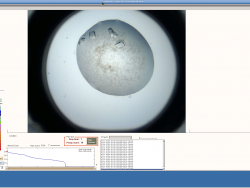
How high throughput fragment screening is reviving old school crystallography tricks
Takeaway: Why: we need lots of well diffracting crystals. How: crystallisation growth optimisation. What: tweaking conditions, phase space understanding, seeding, MMS. At this day and age (2018) many people are thinking that the future of structural molecular biology being about serial XFEL or synchrotron crystallography and electron diffraction, which are great tools to harness the Read More …
